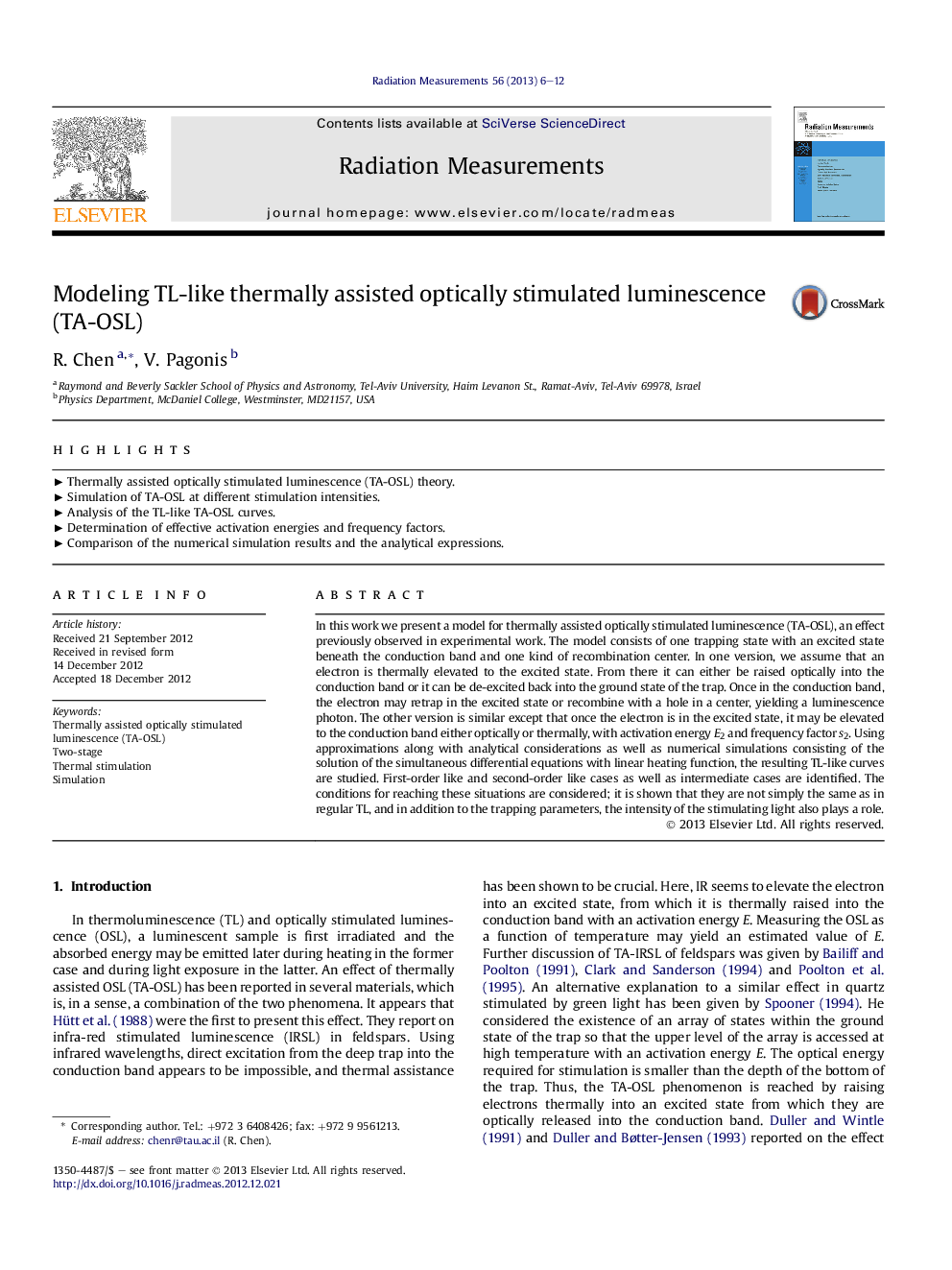| Article ID | Journal | Published Year | Pages | File Type |
|---|---|---|---|---|
| 1888290 | Radiation Measurements | 2013 | 7 Pages |
In this work we present a model for thermally assisted optically stimulated luminescence (TA-OSL), an effect previously observed in experimental work. The model consists of one trapping state with an excited state beneath the conduction band and one kind of recombination center. In one version, we assume that an electron is thermally elevated to the excited state. From there it can either be raised optically into the conduction band or it can be de-excited back into the ground state of the trap. Once in the conduction band, the electron may retrap in the excited state or recombine with a hole in a center, yielding a luminescence photon. The other version is similar except that once the electron is in the excited state, it may be elevated to the conduction band either optically or thermally, with activation energy E2 and frequency factor s2. Using approximations along with analytical considerations as well as numerical simulations consisting of the solution of the simultaneous differential equations with linear heating function, the resulting TL-like curves are studied. First-order like and second-order like cases as well as intermediate cases are identified. The conditions for reaching these situations are considered; it is shown that they are not simply the same as in regular TL, and in addition to the trapping parameters, the intensity of the stimulating light also plays a role.
► Thermally assisted optically stimulated luminescence (TA-OSL) theory. ► Simulation of TA-OSL at different stimulation intensities. ► Analysis of the TL-like TA-OSL curves. ► Determination of effective activation energies and frequency factors. ► Comparison of the numerical simulation results and the analytical expressions.
